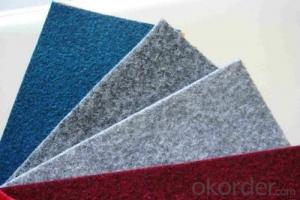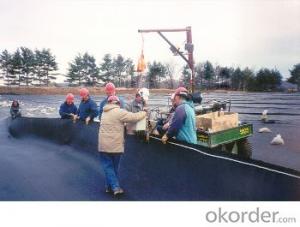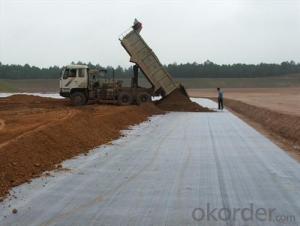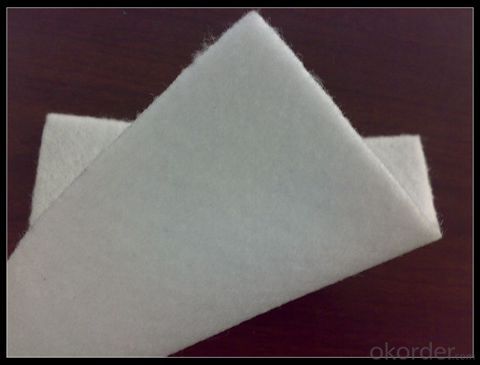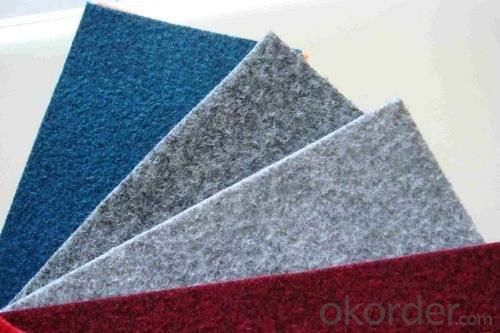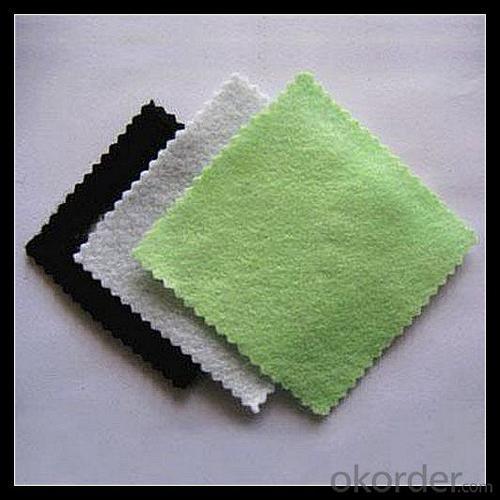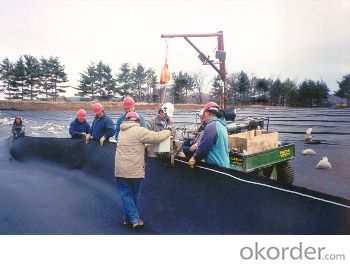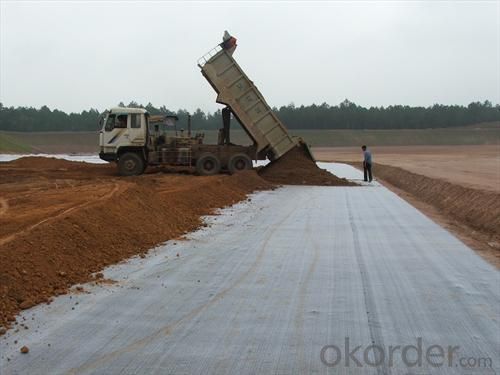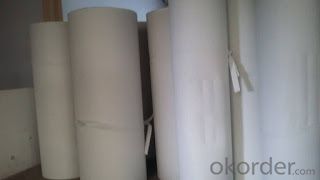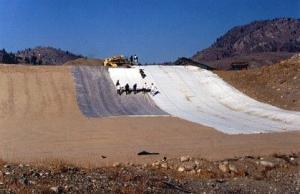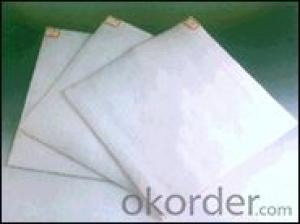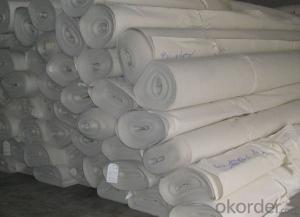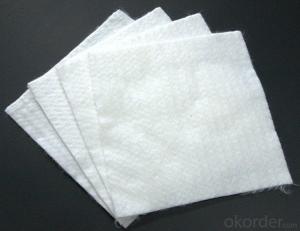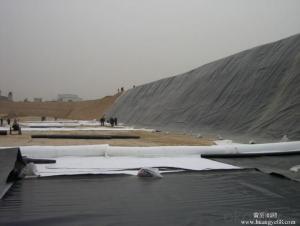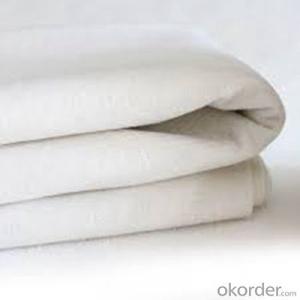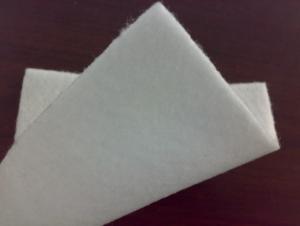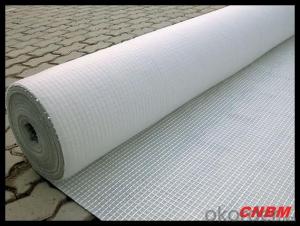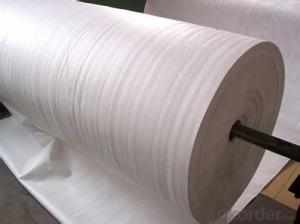Geotextile Filter Bags - Needle Punched Nonwoven Geotextile and High Strength Materials for Stabilization
- Loading Port:
- China main port
- Payment Terms:
- TT OR LC
- Min Order Qty:
- 1000 g/m²
- Supply Capability:
- 100000 g/m²/month
OKorder Service Pledge
OKorder Financial Service
You Might Also Like
Specification
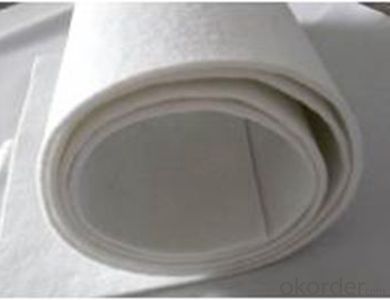
Nonwoven Geotextile For Highways Road Construction
Applications:We offer a wide range of Non Woven Geotextile Fabrics used while making
Highways and Road Construction. Non Woven Geotextile fabrics are also known as civil
engineering fabrics, erosion control cloth, filter fabrics and support membranes.
RP make Non Woven Geotextile fabrics have their project, structure, or system based on
various geo technical materials such as soils, rock, earth etc. Non Woven Geotextile
fabrics are either used to restrict or allow passage of Water in Slopes and Road
construction, as desired.
The Range of Needle punch Non Woven Geotextile fabrics offered by us are as follows:
Reinforcement
Drainage
Separation
Non-woven geotextile fabrics are primarily used for projects where highly permeable
separators are required. This includes applications that must allow water to flow while
preventing soil erosion or soil loss.
FAQ:
Q: What kind of payments does jenor support?
A: T/T, L/C, Cash are accepted.
Q: Do you charge for the samples?
A: Accordeing to our company policy, the samples are free, we only charge the freight fee. And we will return the freight fee during the next order.
Q: Can you produce according to customers' design?
A: Sure, we are professional manufacturer, OEM and ODM are both welcome.
Q: Do you have other products?
A: Yes, please check the pictures:
- Q: How do geotextiles aid in the reduction of pore water pressure?
- Geotextiles aid in the reduction of pore water pressure by providing a barrier that allows water to flow through while preventing the migration of fine particles. This allows for efficient drainage, preventing the build-up of excess pore water pressure within the soil or ground, ultimately reducing the risk of soil liquefaction or instability.
- Q: How do geotextiles improve the performance of asphalt overlays?
- Geotextiles improve the performance of asphalt overlays by providing a separation layer between the existing pavement and the new overlay. This helps to prevent the mixing of materials and the migration of fines, which can lead to premature pavement distress. Geotextiles also enhance the structural integrity of the overlay by distributing loads and reducing stress concentrations, thus increasing the overall lifespan and durability of the pavement.
- Q: Can geotextiles be used in riverbank stabilization projects?
- Yes, geotextiles can be used in riverbank stabilization projects. Geotextiles are often employed in these projects to prevent erosion and provide soil stabilization along riverbanks. They help to reinforce the soil, control water flow, and protect against scouring, making them an effective solution for riverbank stabilization.
- Q: Can geotextiles be used in landfill lining systems?
- Yes, geotextiles can be used in landfill lining systems. They are commonly employed as a part of the composite liner system in landfills to enhance the performance and longevity of the landfill liner. Geotextiles help in preventing the migration of contaminants, provide stability, and increase the overall efficiency of the landfill lining system.
- Q: How do geotextiles contribute to soil stabilization?
- Geotextiles contribute to soil stabilization by providing a barrier that prevents soil erosion, while still allowing water to drain through. They distribute the weight of the load evenly, reducing the chances of soil compaction and settling. Additionally, geotextiles help in reinforcing the soil, increasing its shear strength and stability.
- Q: What are the different geotextile performance properties?
- Some of the different geotextile performance properties include filtration, separation, drainage, erosion control, reinforcement, and cushioning.
- Q: What are the considerations for geotextile selection in landfill projects?
- The considerations for geotextile selection in landfill projects include factors such as the required strength and durability of the geotextile, its ability to resist punctures and tearing, its compatibility with the waste material, and its resistance to chemical degradation. Other factors to consider include the geotextile's permeability, its ability to retain soil particles while allowing for proper drainage, and its cost-effectiveness. Additionally, the geotextile should be selected based on its compliance with regulatory requirements and standards for landfill construction.
- Q: What are the geotextiles?
- Geotextile manufacturers should use geomembrane it
- Q: Health geotextile how much money ah?
- Health geotextile, also known as geotextile, it is made of synthetic fibers through the needle or woven from the permeability of geosynthetics. Finished cloth for the cloth, the general width of 4-6 meters, the length of 50-100 meters. The price according to the weight and standard to set, weight (80-1500g / ㎡), the quality standard is a requirement, divided into non-standard, whitening A, Sinochem, the general national standard, Paul national standard, Wait. Ton price is generally between 4900-7500 yuan / ton, but the weight <200g, an increase of 100 yuan / ton; weight> 800g, an increase of 500 yuan / ton. 187 & lt; 6600 & lt; 5604
- Q: Can geotextiles be used for erosion control in coastal dunes?
- Yes, geotextiles can be used for erosion control in coastal dunes. Geotextiles are permeable fabrics that can be installed to stabilize the sand and prevent erosion by trapping sediment and promoting vegetation growth. They provide an effective and sustainable solution for protecting coastal dunes from erosion caused by wind, waves, and human activities.
Send your message to us
Geotextile Filter Bags - Needle Punched Nonwoven Geotextile and High Strength Materials for Stabilization
- Loading Port:
- China main port
- Payment Terms:
- TT OR LC
- Min Order Qty:
- 1000 g/m²
- Supply Capability:
- 100000 g/m²/month
OKorder Service Pledge
OKorder Financial Service
Similar products
Hot products
Hot Searches
Related keywords

